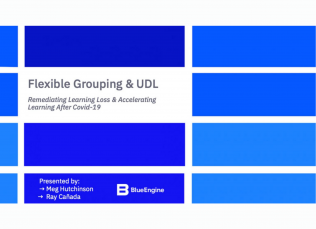
Creating a Welcoming Learning Environment
This module is designed to share ideas about how instructors can create a learning environment that is “welcoming” for a wide range of students.
This resource was originally developed with resources from the College STAR grant. That grant has ended and the College STAR modules will now permanently reside at the East Carolina University Office for Faculty Excellence.
Module Introduction
The college classroom is an important place where students and teachers learn and grow together. It is a place where collaboration occurs as well as idea-sharing and relationship-building. Instructors are one of the most influential figures in the classroom, with the ability to enhance the learning environment and influence the behaviors of all present. This module is designed to share ideas about how instructors can create a learning environment that is "welcoming" for students. By "welcoming" we mean a learning environment that considers the diverse range of strengths and approaches to learning on the college campus today and then facilitates interactions and designs instruction in such a way to maximize learning and reduce barriers in the classroom. Three themes are addressed here in relation to creating a welcoming learning environment; the implementation of effective teaching strategies, the development of a positive relationship between students and teachers, and the effective dealing of conflict in the classroom.
Jennifer Sisk, an English instructor at East Carolina University (ECU) in the Thomas Harriot College of Arts and Sciences instructs first year students in the area of English Composition. She has made it her mission through teaching to show students that she cares about them and their success. She is invested not only in the projects they create, but also in their success in college as a whole. Ms. Sisk understands that students, especially first year students, have a lot on their shoulders, and she wants to insure that students have access to a comfortable and safe learning environment where they gain confidence as students during the learning process.
Jennifer Sisk has developed many ways of making the classroom a welcoming place. One strategy involves taking the time to get to know the learners in her classroom each term. For example, during the first week of class she uses a strategy to learn her student's names, physical characteristics, and personality traits (see how she does this in the Instructional Practice section of this module).
As the class progresses during the semester, Ms. Sisk spends a great deal of time learning about her students' learning styles and what they are truly passionate about. Many students comment during post-course evaluations that they feel "Ms. Sisk truly cares about them and their education". She makes it her goal to create a level of comfort where her students feel safe and welcome, which she believes helps them learn.
Read more about creating a welcoming learning environment through the development of a positive relationship between students and teachers, the implementation of effective teaching strategies, and the effective resolution of conflict in the classroom in the Instructional Practice section of this module.
Support for this Module
Original development of this module was made possible by the College STAR (Supporting Transition Access and Retention) initiative. College STAR was a grant-funded project focused on partnering postsecondary educational professionals and students to learn ways for helping postsecondary campuses become more welcoming of students with learning and attention differences. Much of this work was made possible by generous funding from the Oak Foundation.
Organization/Publishers:
Share this resource:
Posted date:
November 18, 2022








